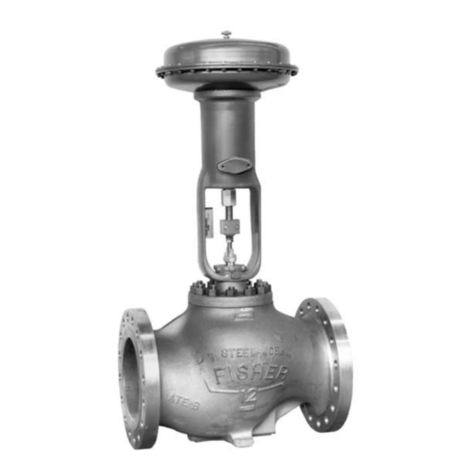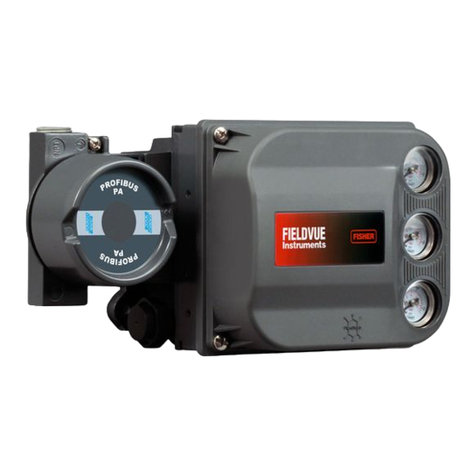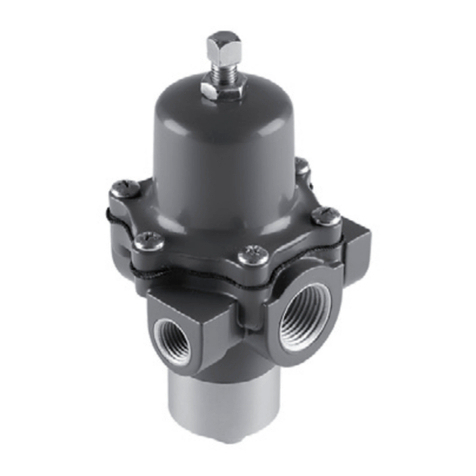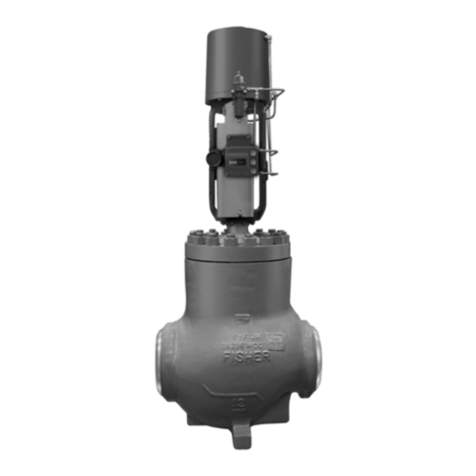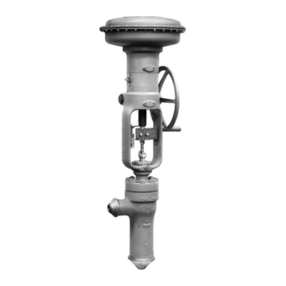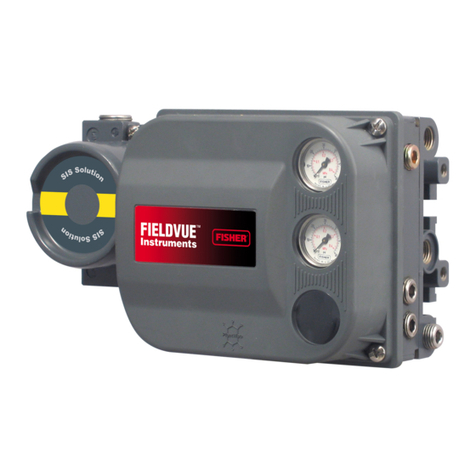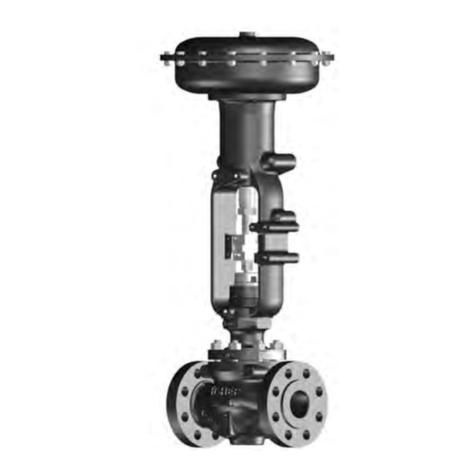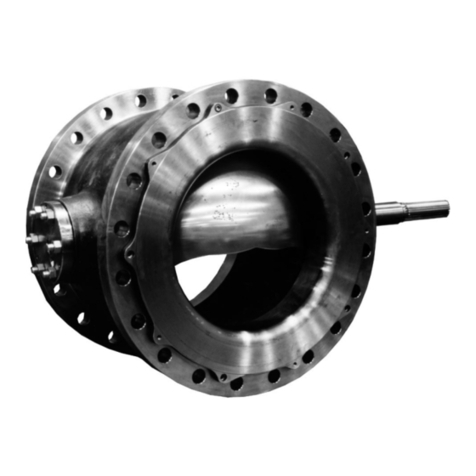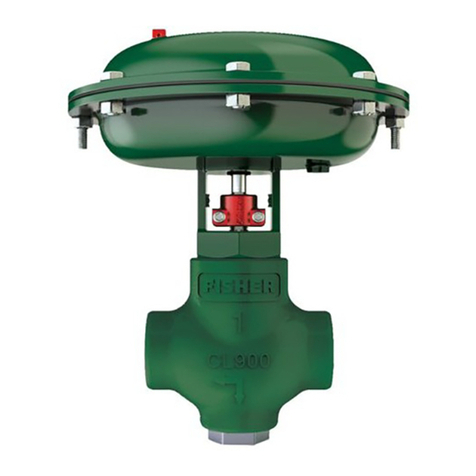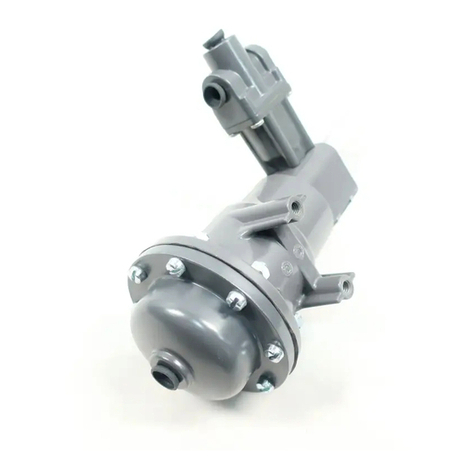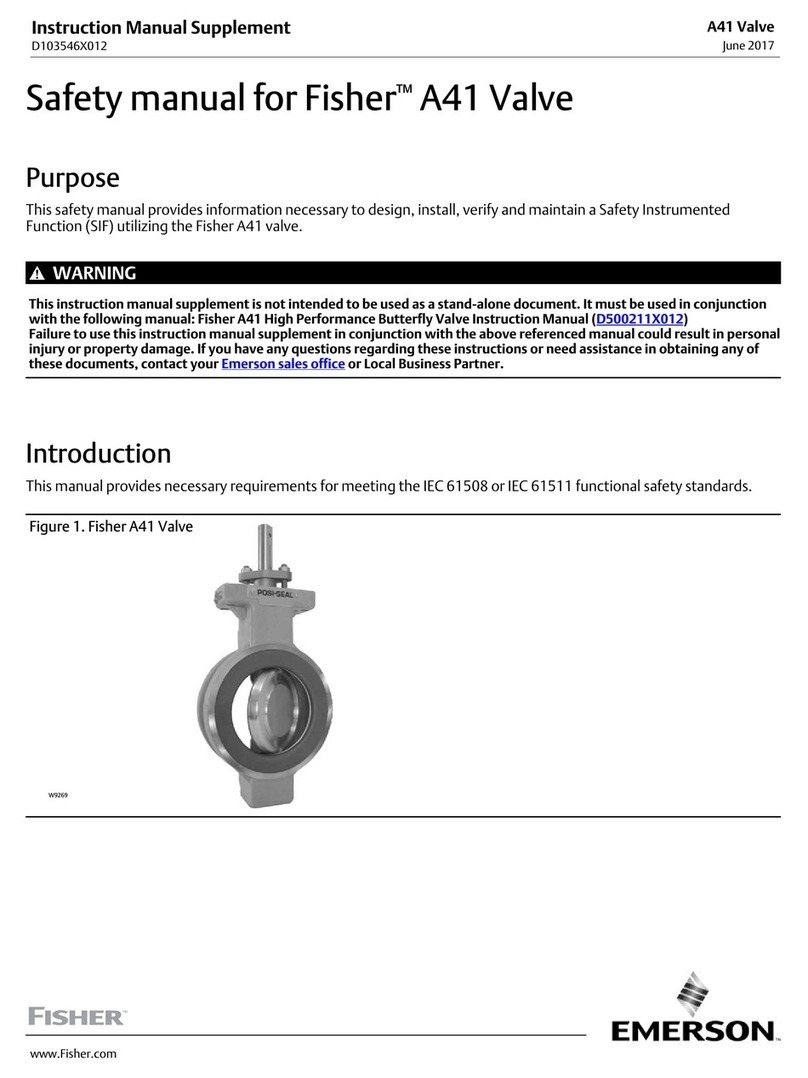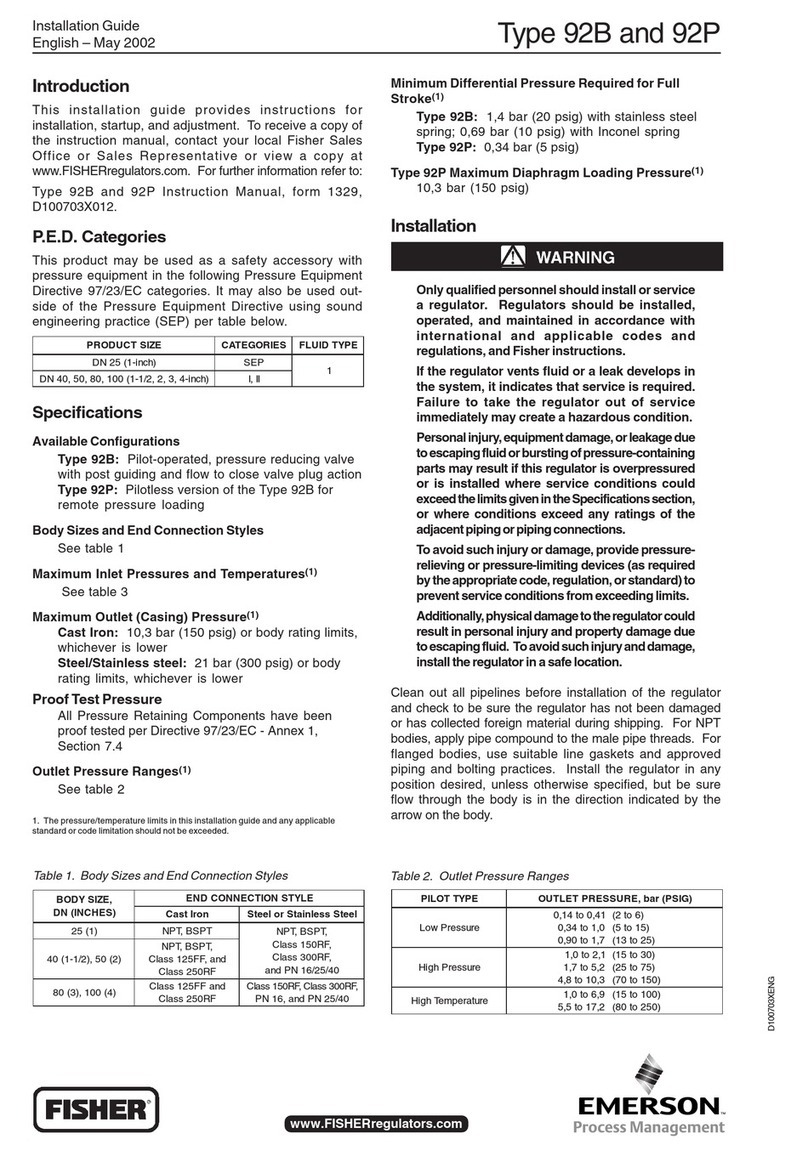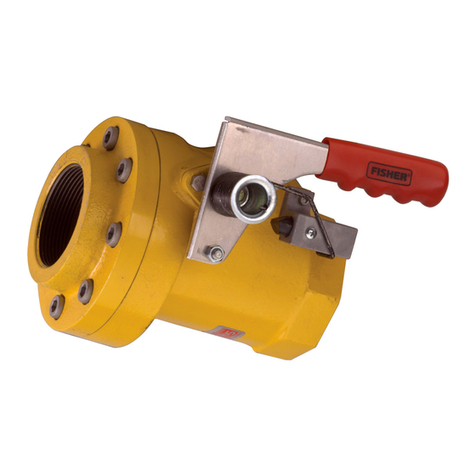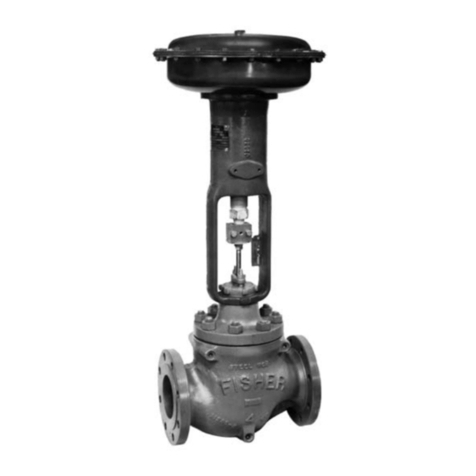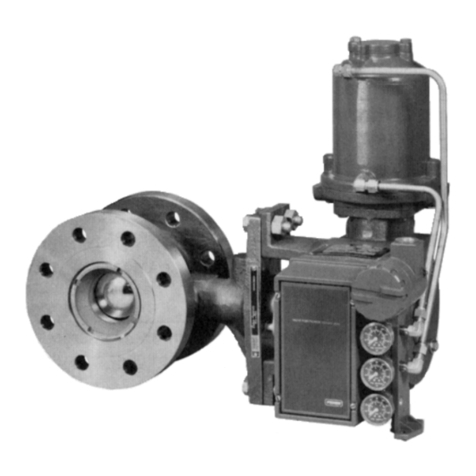
Instruction Manual
D100714X012
461 Valve
June 2017
5
Packing Maintenance
If there is undesirable packing leakage in the spring‐loaded PTFE V‐ring packing shown in figure 3, tighten the packing
flange nuts (key 25, figure 6) until the shoulder on the packing follower (key 29, figure 6) contacts the bonnet (key 14,
figure 6). If leakage continues, replace the packing by following the numbered steps presented in the replacing
packing procedure.
If there is undesirable packing leakage with other than spring‐loaded PTFE V‐ring packing, first try to limit the leakage
and establish a stem seal by tightening the packing flange nuts (key 25, figure 6) to at least the minimum
recommended torque in table 2 or 3. However, do not exceed the maximum recommended torque in table 2 or 3 or
excessive friction may result. If leakage continues, replace the packing by following the numbered steps presented in
the Replacing Packing procedure.
If the packing is relatively new and tight on the valve plug stem, and if tightening the packing flange nuts does not stop
the leakage, it is possible that the stem is worn or nicked so that a seal cannot be made. The surface finish of a new
stem is critical for making a good packing seal. If the leakage comes from the outside diameter of the packing, it is
possible that the leakage is caused by nicks or scratches around the packing box wall. While replacing the packing
according to the Replacing Packing procedure, inspect the valve plug stem and packing box wall for nicks or scratches.
Adding Packing Rings
Key numbers referred to in this procedure are shown in figure 6, unless otherwise indicated.
When using packing with a lantern ring, it may be possible to add packing rings above the lantern ring as a temporary
measure without removing the actuator from the valve body.
1. Isolate the control valve from the line pressure, release pressure from both sides of the valve body, and drain the
process media from both sides of the valve. If using a power actuator, also shut off all pressure lines to the power
actuator, release all pressure from the actuator. Use lock‐out procedures to be sure that the above measures stay in
effect while you work on the equipment.
2. Remove the packing flange nuts (key 25) and lift the packing flange, upper wiper, and packing follower (keys 23, 16,
and 29) away from the valve body.
3. It may be possible to dig out the old packing rings on top of the lantern ring, but use care to avoid scratching the
valve plug stem or packing box wall. Clean all metal parts to remove particles that would prevent the packing from
sealing.
4. Remove the stem connector and slip the packing rings over the end of the valve plug stem.
5. Reassemble the packing follower, upper wiper, packing flange, and packing flange nuts (keys 29, 16, 23, and 25).
6. Reconnect the body‐actuator stem connection according to the appropriate actuator instruction manual.
7. Tighten the packing flange nuts only far enough to stop leakage under operating conditions. Check for leakage
around the packing follower when the valve is being put into service. Retighten the packing flange nuts as required
(see table 2 or 3).
Replacing Packing
WARNING
Refer to the WARNING at the beginning of the Maintenance section in this instruction manual.
Key numbers referred to in this procedure are shown in figure 6, unless otherwise indicated.





